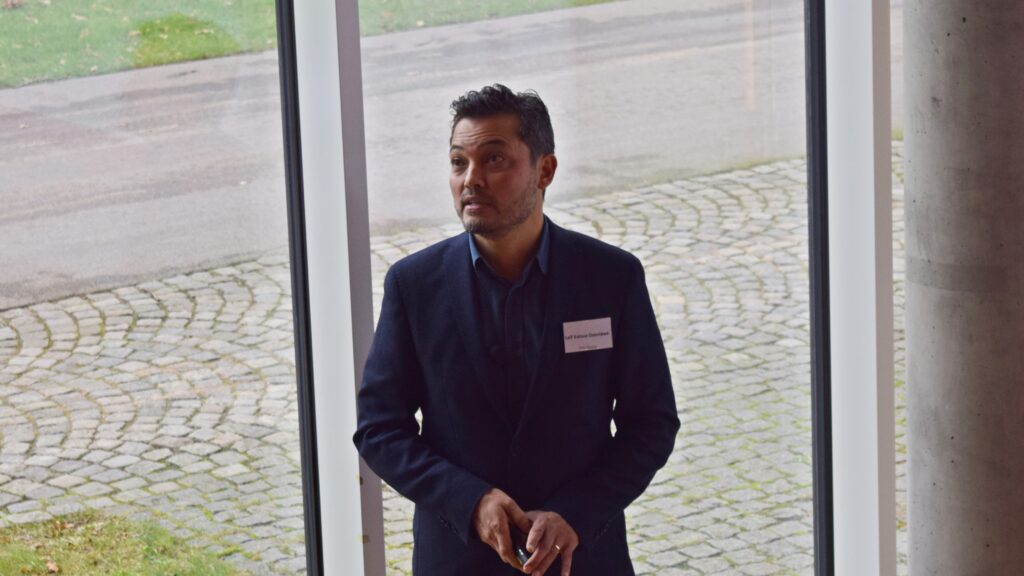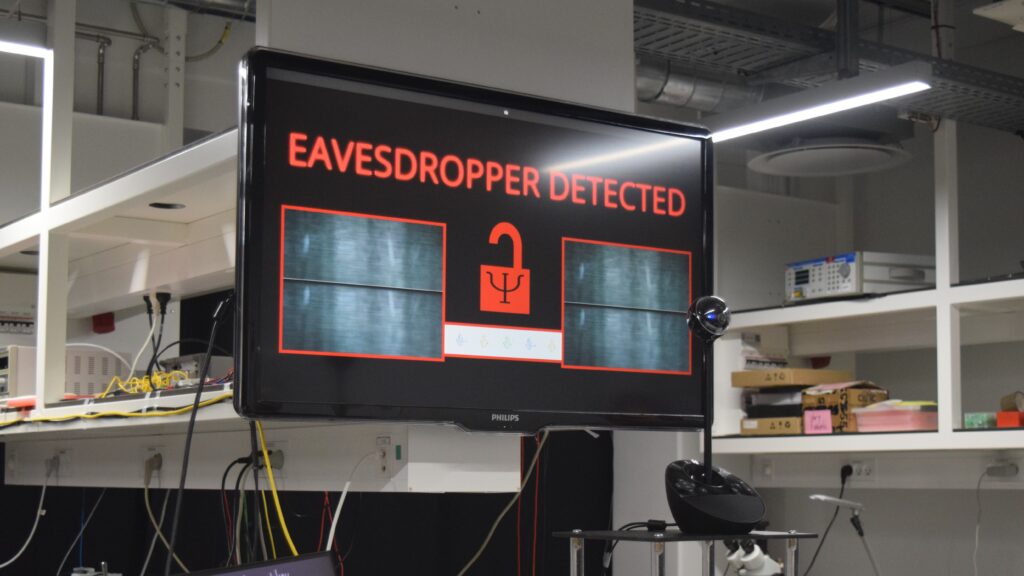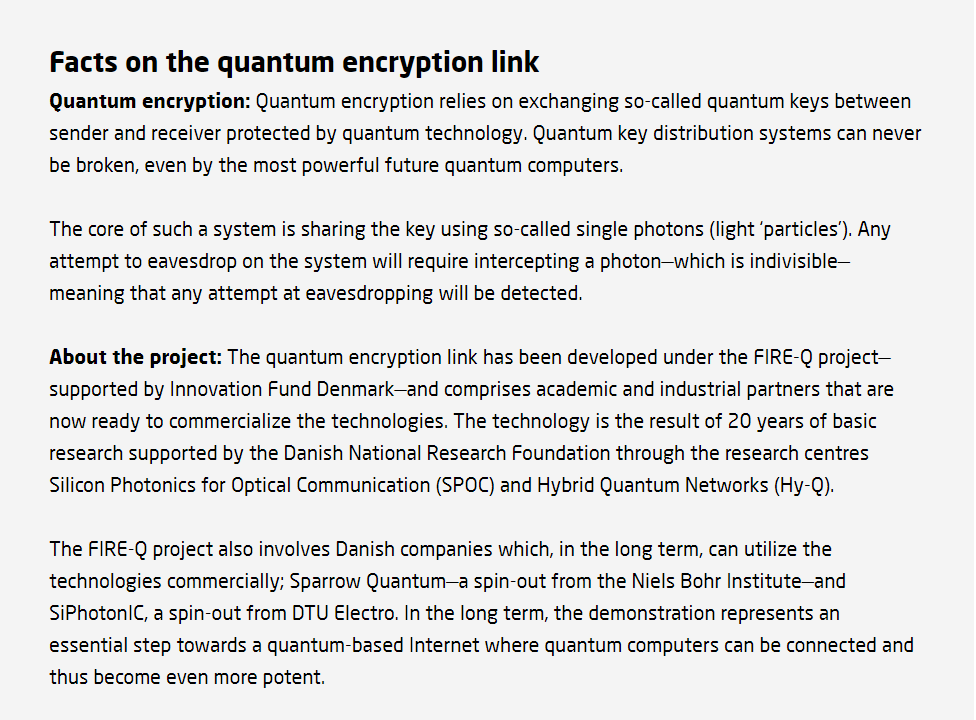December 5, 2022
Unbreakable fibre network connection established between DTU and Niels Bohr Institute
In collaboration with researchers from the Niels Bohr Institute, DTU researchers have demonstrated a 100 per cent secure video connection over the existing fibre network.
On 22 November, Danish researchers demonstrated an unbreakable, quantum-encrypted connection between the Niels Bohr Institute in Copenhagen and DTU in Lyngby. It is the first time such a connection has been established in Denmark, and it is a world first with a so-called deterministic single-photon source. The connection has been established via the existing fibre network—over a distance of approximately 18 kilometres.
Anders Eldrup, Chair of the Board of Innovation Fund Denmark, and Natasha Friis Saxberg, CEO of the Danish ICT Industry Association demonstrated the connection. Anders Eldrup was in a laboratory at DTU, and Natasha Friis Saxberg was in a laboratory at the Niels Bohr Institute. The purpose of the demonstration was to show how quantum encryption is sufficiently mature to be incorporated into future cybersecurity.
The encryption technology we use today may be complex and very hard to break. Still, a future quantum computer or simpler computers based on quantum mechanical principles can easily break most current encryption codes.
The researchers at DTU and the Niels Bohr Institute have therefore developed new technology for creating a single-photon-based link for unbreakable communication and implemented the technology to be applied to the existing fibre connection. According to the researchers, the technology has great potential for protecting critical infrastructure worldwide and offers excellent opportunities for the Danish business sector.
Mathematical encryption challenged
According to Professor Leif Oxenløwe from DTU Electro—one of the researchers behind the new connection—our current mathematically-based encryption will soon be challenged by quantum computers or quantum computer-like systems.
“The risk of hacking is increasing, and many expect that the encryption codes we know today will become insecure within a few years. So there is a real need for us to move away from encryptions based on computational complexity, where you use an algorithm to form a code,” says Leif Oxenløwe.
Quantum computers or similar systems will possess computing power that will make it much, much quicker to break otherwise complicated codes. Breaking a code that today will take an ordinary computer many hundreds of years to break will only take a quantum computer about eight hours, according to one assessment.

Quantum encryption can withstand any attack
There is, therefore, a need for a different form of encryption, and here the use of quantum encryption is an obvious choice. In fact, quantum encryption can demonstrably withstand all attacks on the communication channel because any attempt at eavesdropping will be revealed, and the key can be created using quantum mechanically-based absolute randomness.
“There is a fundamental element of uncertainty associated with quantum mechanics. We can use this to generate encryption keys that are impossible to guess or figure out in any way,” says Leif Oxenløwe.
“We also use single photons—individual light particles—to create the encryption. They are indivisible, meaning the only way to intercept the information they carry is to snatch the photon itself. We will then know right away that someone is on the line, and we can close the line immediately.”
Part of the demonstration also showed what would happen if someone tried to break into the video link. Caterina Vigliar, Postdoc at DTU Electro, played the role of an eavesdropper. The moment she manipulated the link, the connection between Anders Eldrup and Natasha Friis Saxberg was cut. It was only re-established when the attempted eavesdropping was abandoned.


Read more at DTU.dk